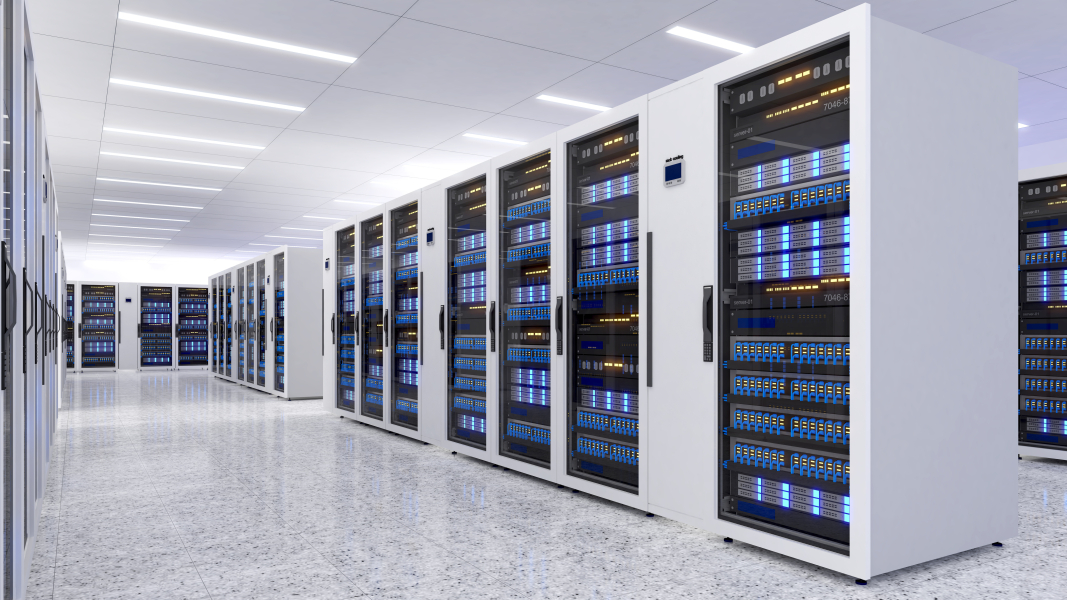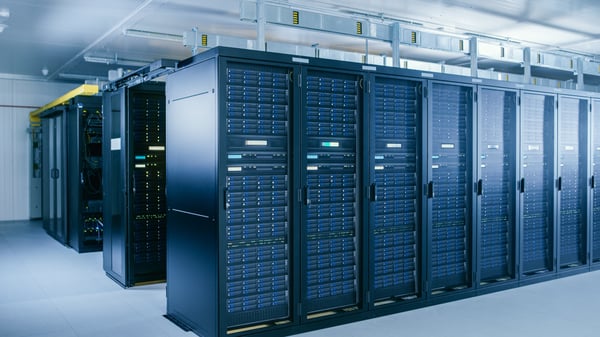Blog Post
Single-Phase vs Two-Phase Cooling in Data Centers
Apr. 30, 2025

As data centers grow in quantity, size, and power density, effective cooling solutions are essential. Traditional air-cooling methods are becoming inadequate, leading to the adoption of liquid-cooling methods.
Single-Phase Cooling
One method of liquid cooling gaining popularity in data centers is single-phase cooling, which involves a coolant that remains in the same physical state throughout the process. The coolant, typically water or a dielectric (nonconductive) fluid like Propylene Glycol 25% (PG25), is circulated through cold plates, heat exchangers, or direct-to-chip cooling systems, where it absorbs heat from the IT equipment and is pumped to a heat exchanger or chiller.
Single-phase cooling has four main advantages:
- Reliability and simplicity: The technology is well-established, and since the liquid remains in a constant state, the risk of phase-related inefficiencies is reduced.
- Ease of maintenance: Single-phase systems require fewer specialized components, making them easier to maintain and repair.
- Lower cost: Compared to two-phase cooling, single-phase systems have lower upfront costs and simpler infrastructure requirements.
- Compatibility: These systems can integrate with existing data center cooling infrastructure, making them ideal for gradual upgrades.
Single-phase cooling is not without challenges, though. Since the coolant in a single-phase system does not undergo a phase change, the heat capacity is lower compared to two-phase cooling. In addition, maintaining a consistent coolant flow requires significant pumping power, potentially increasing energy consumption.
Two-Phase Cooling
With two-phase cooling, a refrigerant is used to cool the system. The fluid changes from liquid to vapor as it absorbs heat. This process increases heat transfer efficiency as the phase transition takes in large amounts of energy. Then, the vapor condenses back into liquid to complete the cycle.
Advantages of two-phase cooling include:
- Higher heat transfer efficiency: Two-phase systems can absorb more heat per unit of coolant, making them ideal for high-performance computing.
- Reduced pumping requirements: The natural phase change cycle facilitates fluid movement, reducing the need for powerful pumps and lowering energy consumption.
- Better space utilization: Higher heat absorption efficiency means smaller cooling components, freeing up valuable data center space.
Challenges related to two-phase cooling include complexity due to the phase change process, higher initial costs, fluid management considerations, and long-term maintenance.

Choosing the Right Cooling Method
Deciding between single-phase and two-phase cooling depends on several factors including power density, operational costs, and future scalability needs. For existing data centers with moderate cooling needs, single-phase cooling is a practical choice due to its lower complexity and easier integration. For next generation high-performance computing and AI-driven workloads, two-phase cooling provides superior thermal management enabling high computer density with lower overall energy consumption. Some data centers employ a combination of single and two-phase cooling, leveraging technology where it performs best.
Dixon’s Thermal Management Solutions
Dixon, as a member of the Open Compute Project, is committed to supporting data centers during the shift toward liquid cooling. We strive to provide tailored solutions with a diverse range of products to address the unique challenges of data center thermal management. By partnering with Dixon, you can expect high-quality, efficient products from a reliable supplier with a proud history of North American manufacturing.
Summary
As computing power continues to increase, cooling technologies must evolve to keep pace. Two-phase cooling is gaining traction, due to its efficiency advantages. However, ongoing advancements in single-phase liquid cooling, such as direct-to-chip cooling, ensure its continued relevance.
Both technologies play a crucial role in shaping the future of data centers. Selecting the right cooling method is key to optimizing performance, reducing operational costs, and supporting future computing demands.
To discuss your data center cooling needs and explore how Dixon can provide tailored solutions, visit dixonvalve.com or call 877.963.4966.
